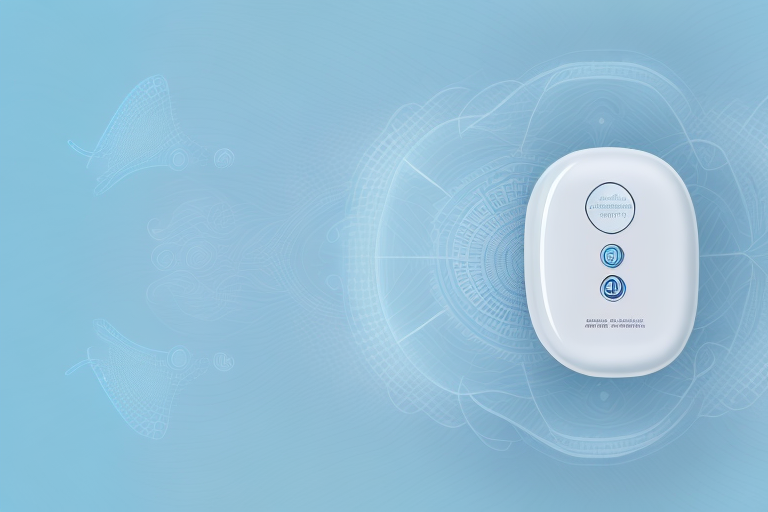If you are someone who struggles with intense muscle tension or recurring pain in your body, you may be familiar with deep tissue massage therapy. This type of massage targets deeper layers of muscle and connective tissue to provide relief from chronic pain and tension. However, not everyone has the time or resources to regularly visit a massage therapist. Fortunately, deep tissue massagers offer a convenient and effective alternative that can be used in the comfort of your own home. In this article, we will explore the various techniques and benefits of using a deep tissue massager for maximum relaxation and pain relief.
Understanding Deep Tissue Massage Therapy
Deep tissue massage therapy is a technique that involves applying firm pressure and slow strokes to target deeper layers of muscle and connective tissue. This type of massage is commonly used to alleviate chronic pain and tension, particularly in the back, neck, and shoulders. Deep tissue massage therapy can also help improve range of motion and flexibility, reduce muscle spasms, and promote overall relaxation.
It is important to note that deep tissue massage therapy may not be suitable for everyone. Individuals with certain medical conditions, such as osteoporosis or blood clotting disorders, should consult with their healthcare provider before receiving this type of massage. Additionally, some people may experience temporary soreness or discomfort after a deep tissue massage, but this should subside within a day or two. It is recommended to drink plenty of water after a deep tissue massage to help flush out any toxins released during the massage.
The Benefits of Deep Tissue Massage
One of the primary benefits of using a deep tissue massager is the ability to achieve the same benefits as a professional massage therapist in the comfort of your own home. Additionally, using a deep tissue massager can offer the following benefits:
- Alleviate muscle pain and tension
- Reduce the risk of injury and manage chronic conditions
- Improve circulation and reduce inflammation
- Promote relaxation and reduce stress levels
Another benefit of deep tissue massage is that it can help improve flexibility and range of motion. By targeting deep layers of muscle tissue, a deep tissue massager can help break up scar tissue and adhesions, which can restrict movement and cause pain. This can be especially beneficial for athletes or individuals who engage in regular physical activity, as it can help prevent injuries and improve overall performance.
How Deep Tissue Massagers Work
Deep tissue massagers work by applying concentrated pressure to specific muscle groups using percussive or vibrating motions. This pressure helps to break up tight knots and adhesions within the muscle tissue, which can cause pain and stiffness. In addition to improving blood flow, deep tissue massagers can also stimulate the release of endorphins, which are natural painkillers produced by the body.
It is important to note that deep tissue massagers should be used with caution, as applying too much pressure or using them for too long can cause bruising or further injury to the muscles. It is recommended to start with a lower intensity and gradually increase as needed. It is also important to target the specific muscle groups that are causing discomfort, rather than using the massager on the entire body.
Different Types of Deep Tissue Massagers
There are a variety of deep tissue massagers available on the market, each designed to target different muscle groups and provide varying levels of intensity. Handheld massagers are the most common type of deep tissue massager and are typically cordless, making them easy to use on the go. Other popular types of deep tissue massagers include foam rollers, massage balls, and massage chairs.
It is important to choose the right type of deep tissue massager based on your specific needs. For example, foam rollers are great for targeting larger muscle groups like the back and legs, while massage balls are better for pinpointing specific trigger points. Massage chairs provide a full-body massage experience, but can be quite expensive. It is also important to consider the intensity level of the massager, as some people may prefer a gentler massage while others may require a more intense pressure to effectively relieve muscle tension.
Factors to Consider When Choosing a Deep Tissue Massager
When choosing a deep tissue massager, there are a few important factors to consider:
- Intensity level
- Battery life
- Size and weight
- Attachments and accessories
Another important factor to consider when choosing a deep tissue massager is the type of massage head. Different massage heads are designed to target specific areas of the body and provide different types of massage. For example, a round massage head is great for general use, while a bullet-shaped head is ideal for targeting specific trigger points. A fork-shaped head is perfect for massaging the neck and spine, while a flat head is great for larger muscle groups like the back and legs. Consider your specific needs and choose a massager with the appropriate massage head for the best results.
Techniques for Using a Deep Tissue Massager Effectively
Using a deep tissue massager effectively involves targeting muscle groups that commonly hold tension and applying adequate pressure for a sustained period of time. It is important to start with the lowest intensity level and gradually increase as needed to avoid exacerbating any existing pain or discomfort. Additionally, alternating between different attachments and accessories can help target specific muscle groups and provide a more comprehensive massage experience.
Another important technique for using a deep tissue massager effectively is to focus on your breathing. Taking deep breaths while using the massager can help relax your muscles and increase blood flow to the targeted area. It is also important to maintain good posture and avoid hunching over while using the massager, as this can cause strain on your back and neck muscles. Finally, it is recommended to use the massager for no more than 15-20 minutes at a time to avoid overworking your muscles and causing further discomfort.
Best Practices for Maximum Relaxation with a Deep Tissue Massager
Using a deep tissue massager can be a relaxing and rejuvenating experience, but it is important to follow a few best practices to maximize the benefits:
- Find a quiet, relaxing environment to use your massager
- Apply gentle pressure to start and gradually increase as needed
- Use slow, deliberate motions to target muscle groups
- Take breaks as needed to avoid overstimulation
Precautions and Safety Tips for Using a Deep Tissue Massager
While deep tissue massagers are generally safe to use, there are a few precautions to keep in mind:
- Avoid using a deep tissue massager on areas with open wounds, bruising, or inflammation
- Do not use a deep tissue massager if you have a pacemaker or other implanted device
- Consult with a healthcare professional if you have any concerns about using a deep tissue massager with an existing medical condition
Integrating Deep Tissue Massage into Your Wellness Routine
Using a deep tissue massager can be an effective way to enhance your overall wellness routine. Incorporating regular massages into your self-care routine can help reduce stress levels, improve sleep quality, and alleviate chronic pain and tension. By using a deep tissue massager, you can enjoy similar benefits without having to leave the comfort of your own home. Remember to always use caution and consult with a healthcare professional if you have any concerns about using a deep tissue massager as part of your wellness routine.





